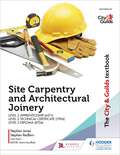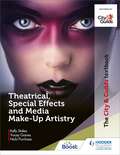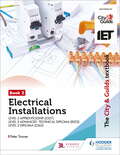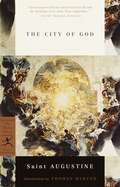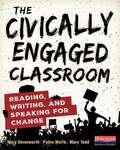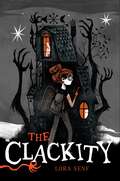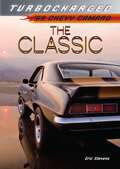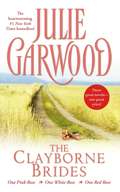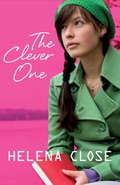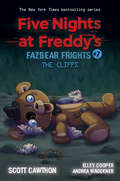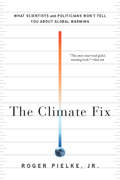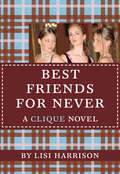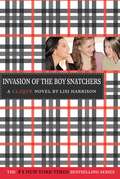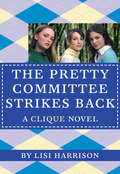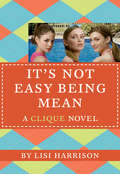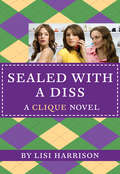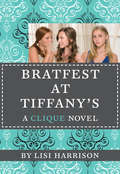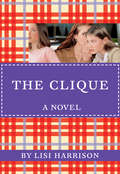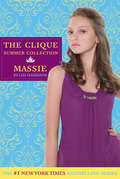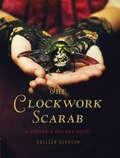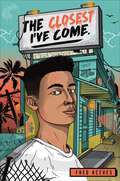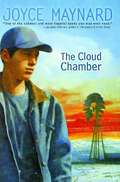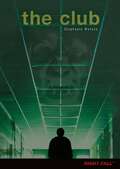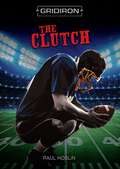- Table View
- List View
The City & Guilds Textbook: Site Carpentry and Architectural Joinery for the Level 2 Apprenticeship (6571), Level 2 Technical Certificate (7906) & Level 2 Diploma (6706)
by Stephen Jones Colin Fearn Stephen RedfernEnsure your learners have the knowledge and skills to start a successful career in the construction industry, with this comprehensive new textbook published in association with City & Guilds for the legacy 6706, new 7906 and new Apprenticeship standard. This brand new title will help students:- Study with confidence, using the most up-to-date information available for all specifications andindustry standards- Enhance their understanding of concepts and techniques with clear and accurate technical drawingsand step-by-step photo sequences- Test their knowledge with end of chapter practice questions- Get ready for the workplace with industry tips and activities- Develop core skills with authors Stephen Jones and Stephen Redfern, who draw on their extensiveteaching and industry experience
The City & Guilds Textbook: Theatrical, Special Effects and Media Make-Up Artistry
by Kelly Stokes Tracey Gaines Nicki HobbsCreate the foundation for a successful career in the theatrical and media make-up industry with this new textbook, endorsed by City & Guilds for theatrical, special effects and hair and media make-up artistry qualifications at Levels 2 and 3.- Study with confidence, with content covering the latest qualifications and industry standards, including the 6010 specifications.- Get ready to work in make-up, film, TV or theatre with handy hints from experienced professionals.- Hone your practical skills with hundreds of photographs showcasing creative ideas from look books and industry portfolios.- Understand complex topics such as anatomy and physiology with ease with simple explanations and all of the important terminology explained.- Prepare effectively for the written exams and practical synoptic test with practice questions, scenarios and invaluable guidance.
The City & Guilds Textbook:Book 2 Electrical Installations for the Level 3 Apprenticeship (5357), Level 3 Advanced Technical Diploma (8202) & Level 3 Diploma (2365)
by Peter TannerComplete your pathway to a career in electrical installation with Electrical Installations Book 2, published in association with City & Guilds and IET. This fully revised new textbook has been fully-updated in line with the 2018, 18th Edition wiring regulations.-Study with confidence, using the most up-to-date information available for the new specifications and industry standards-Enhance your understanding of concepts in electrical installation with clear and accurate technical drawings, and step-by-step photo sequences -Prepare for your trade tests or end of year exams, with end of chapter practice questions and a final assessment preparation chapter-Get ready for the workplace with Industry Tips and guidance on values and behaviours-Engage with author Peter Tanner's accessible text, drawing on his extensive industry experience
The City of God: A Christian Classic Work By St. Augustine Of Hippo (Modern Library Classics)
by Saint AugustineWritten in the early 5th century by Augustine of Hippo, who later became a Doctor of the Church, this large theological work provided an articulate defense of Christianity when it was being held culpable for the shocking sack of Rome that had occurred just a few years before. It outlines a citizenship that goes beyond the worldly, the political, and the self-centered, instead focusing on a place where the inhabitants are devout, God-focused, and seeking grace. In examining history with a clear perception of good and evil, Augustine was in effect interpreting human actions in relation to eternity. He contrasts earthly and heavenly cities to great effect, in addition to inspecting pagan religions, Greek philosophers like Plato, and the Bible. Just as it influenced the people of the author's own time, "The City of God" is still a powerful Christian text to this day and considered a foundational work of Christianity.
The City's Son: in hidden London you'll find marvels, magic . . . and menace
by Tom Pollock'An impeccably dark parable, endlessly inventive and utterly compelling' M R Carey, author of The Girl with all the Gifts Beth's world is falling apart. Then she discovers a hidden London, full of marvels, magic . . . and menace. Perfect for fans of Neil Gaiman's Neverwhere. Hidden under the surface of everyday London is a city where wild train spirits stampede over the tracks and glass-skinned dancers with glowing veins light the streets. When a devastating betrayal drives her from her home, Beth stumbles into the secret city, where she finds Filius Viae, London's ragged crown prince, just when he needs someone the most. For an ancient enemy has returned to the darkness under St Paul's Cathedral, bent on reigniting a centuries-old war. Desperate to find a way to save the city they both love, they find themselves in a desperate race through this bizarre urban wonderland, but when Beth's best friend is captured, she must choose between this wondrous existence and the life she left behind.The City's Son is the first book of The Skyscraper Throne trilogy: a story about family, friends and monsters, and how you can't always tell which is which.
The Civically Engaged Classroom
by Mary Ehrenworth Pablo Wolfe Marc ToddAre your students ready to become the engaged and informed citizens our democracy needs right now? Your classroom can be a place for them to experience what it means to live in community with others, to balance their own interests with those of the group, to challenge themselves to overcome differences, and to ask the questions that help them understand the crux of an issue. Powerful reading and writing is fundamentally linked to civic education. The Civically Engaged Classroom is packed with practical guidance designed to support teachers in giving students the skills, knowledge, and tools to be active participants in society. Each chapter describes classroom structures, curricular possibilities, and specific lessons for teaching crucial civic virtues, including: acknowledging identity, bias, and privilege building background knowledge close and critical reading and ethical research skills composing nuanced stances in writing building coalitions and engaging in activism. The work of engaging young people isn't about giving students a voice: they already have their own voices. The work is about teaching them to use those voices with power. - If you are an educator and are interested in joining a community of practice dedicated to preparing the citizens this world needs right now, then the Coalition of Civically Engaged Educators is for you! Visit https: //www.civically-engaged.org to learn more.
The Clackity (Blight Harbor)
by Lora SenfReminiscent of Doll Bones and Small Spaces, this &“delightfully eerie&” (Erin A. Craig, New York Times bestselling author of House of Salt and Sorrows) middle grade novel tells the story of a girl who must rescue her aunt by entering a world of ghosts, witches, and monsters to play a game with deadly consequences.Evie Von Rathe lives in Blight Harbor—the seventh-most haunted town in America—with her Aunt Desdemona, the local paranormal expert. Des doesn&’t have many rules except one: Stay out of the abandoned slaughterhouse at the edge of town. But when her aunt disappears into the building, Evie goes searching for her. There she meets The Clackity, a creature who lives in the shadows and seams of the slaughterhouse. The Clackity makes a deal with Evie to help get Des back in exchange for the ghost of John Jeffrey Pope, a serial killer who stalked Blight Harbor a hundred years earlier. Evie reluctantly embarks on a journey into a strange otherworld filled with hungry witches, penny-eyed ghosts, and a memory-thief, all while being pursued by a dead man whose only goal is to add Evie to his collection of lost souls. Will she ever find Des, or is The Clackity planning something far more sinister?
The Classic: ’69 Chevy Camaro (Turbocharged)
by Eric StevensEddie King dreams of drag racing. When Eddie's dad ditched the family, he left behind a '69 Chevy Camaro, and Eddie's determined to get the old beater back into racing shape. He even sets out to get his dad's help with the project. When Eddie's dad shows up with an expensive new carburetor, Eddie can't help but wonder where it came from. Is his dad involved in illegal activity? And will Eddie get drawn in—or rise above it and compete in the big race? Includes real tech specs and tuning details for the '69 Chevy Camaro!
The Clayborne Brides
by Julie GarwoodFirst introduced in Julie Garwood's magnificent New York Times bestseller For the Roses, the Clayborne brothers of Blue Belle, Montana, have been embraced by millions more through this trio of #1 bestselling novels. Now collected in one volume for the first time, these stories tell of three spirited brothers -- once a mismatched gang of street urchins -- who learn that love flourishes in the most unexpected places....One Pink RoseHeadstrong Travis takes a journey that opens his eyes to the splendor of his beloved West -- and his heart to Bostonian Emily Finnegan.One White RoseSteady, quiet Douglas will do anything to protect a creature in need -- and that includes the strong-willed Isabel Grant.One Red RoseThoughtful Adam learns a powerful secret from the irrepressible Genevieve Delacroix -- that true freedom only comes when you trust your heart.
The Clever One
by Helena CloseI've always been 'the clever one'. So clever that I got 10 As in my Junior Cert. So clever that everyone knows I'm destined for great things. But my family chooses to ignore how clever I am when I tell them that all this is going to end badly.'This' being my sister Fiona's announcement that she is having a baby (father: Big; occupation: shady scumbag). At first, I swore I wouldn't help her. After all, if she wants to be a pramface, that's her problem. But I didn't realise how much I'd love baby Harvey, and want to do everything in my power to protect him.Mam is doing her usual act of pretending everything's fine. My brother Cian is in a world of his own. My shiny happy best friend Mark thinks I should stay out of it.But I can't. So I try to figure out a way to get Big out of our lives for good. And once my plan is in motion, I can't go back. No matter how much I sometimes want to.
The Cliffs (Five Nights at Freddy's #7)
by Scott CawthonSome things must be learned the hard way . . . Reed sees an opportunity to teach the school bully not to mess with him, but ends up mangling the lesson. Robert, an exhausted single father, gets a crash course in parenting when he buys a fancy new teddy bear to watch and entertain his young son. Chris, eager to join the Science Club at school, agrees to undergo a grisly experiment to be accepted. But in the malevolent universe of Five Nights at Freddy's, there's always an education in pain.In this seventh volume, Five Nights at Freddy's creator Scott Cawthon spins three sinister novella-length stories from different corners of his series' canon, featuring cover art from fanfavorite artist LadyFiszi.Readers beware: This collection of terrifying tales is enough to unsettle even the most hardened Five Nights at Freddy's fans.
The Climate Fix: What Scientists and Politicians Won't Tell You About Global Warming
by Roger Pielke Jr.Why has the world been unable to address global warming? Science policy expert Roger Pielke, Jr., says it's not the fault of those who reject the Kyoto Protocol, but those who support it, and the magical thinking that the agreement represents. In The Climate Fix, Pielke offers a way to repair climate policy, shifting the debate away from meaningless targets and toward a revolution in how the world's economy is powered, while de-fanging the venomous politics surrounding the crisis. The debate on global warming has lost none of its power to polarize and provoke in a haze of partisan vitriol. The Climate Fix will bring something new to the discussions: a commonsense perspective and practical actions better than any offered so far.
The Clique #2: Best Friends for Never (The Clique #2)
by Lisi HarrisonIn the second book starring Westchester County's most privileged middle schoolers, the Clique declares Massie a hero for hosting the first boy/girl Halloween party of 8th grade. Massie's already hired Landon Dorsey, the hottest party planner in the 9-1-4 area code, but her parents insist she has to invite the entire class. Unfortunately that means everyone. Layne is bummed that the boys will be there -- she IMs Claire that's so "DESPR8" -- as Claire wonders if maybe a boyfriend will make her happy.Meanwhile, Massie and the Clique are fighting over who gets to invite Derek Herrington. Dylan thought it was obvious that she was the one who danced all night with Derek at the OCD benefit last month, but says "Whatevs" when Kristen gets all weird about it. Fine, she can have him. He was a terrible dancer anyway and there will be tons of guys to choose from at the party....
The Clique #4: Invasion of the Boy Snatchers (The Clique #4)
by Lisi HarrisonThe holidays are over and Massie's room is chock-full of new things from Santa: jeans, sweater, and a new . . . roommate? Once Claire unpacks, Massie's room feels more crowded than a Zac Posen sample sale. But what's worse, Claire isn't the only person moving into Massie's territory -- Alicia's hot cousin, Nina, shows up from Spain and starts edging in on all the Briarwood boys, including Massie's crush! Will Nina, with her super-tight mall clothes, make every boy in Westchester fall in love with her? Or will Massie toss her out faster than last season's Sevens jeans? The social minefields of Westchester County's most privileged middle school girls drive the page-turning action of this addictive series, set in New York City's most elite suburban county. The Clique . . . the only thing harder than getting in is staying in.
The Clique #5: The Pretty Committee Strikes Back (The Clique #5)
by Lisi HarrisonA tragic haircut leaves Kristen looking manlier than a New York Jets linebacker. Will she be condemned to a season of trying to find cute hats when, as everyone knows, hats are so over? Meanwhile, Claire got everything she wants -- new camo Converse high-tops, bag and bags of gummies, and best of all, her first ever cell phone, from Massie. Although Claire's now an official member of the Clique, presents don't matter to her -- all she really wants is her first kiss from Cam, of course!
The Clique #7: It's Not Easy Being Mean (The Clique #7)
by Lisi HarrisonMassie Block: Getting back into Octavian Country Day was a piece of sugar-free cake, compared to Massie's next goal-finding the key that unlocks an ah-mazing legendary secret room at OCD! Alpha eighth grader Skye Hamilton and her clique have stashed the key in the bedroom of one mystery Briarwood boy, but who? Whoever finds the key gets access to the secret room for an entire year and the prestige that comes along with it. But what happens when LBR Layne seems to be getting closer? This is way more than a matter of life or death, it's a matter of in or out!Kristen Gregory: Always been a star on the soccer field, but her style gets majorly cramped when her friends are forced to join the team. They better start kicking those soccer balls or Kristen's going to start kicking some . . . !Alicia Rivera: Uses her skills as a gossip reporter to scheme her way into the rooms of all the Briarwood hotties!Dylan Marvil: Heard depression makes people lose weight. Is hoping for some sad news soon because she's popping donut holes the way some people pop Tic-Tacs.Claire Lyons: Being famous isn't all it's cracked up to be! Her agent confiscates her gummies, and forces her to do some very bad things to make her more "edgy." Worst of all, her constant meetings with lawyers and movie execs are eating into her time with the P.C. and with Cam! Is being a Hollywood starlet worth the Gucci-high price tag?
The Clique #8: Sealed with a Diss (The Clique #8)
by Lisi HarrisonMassie Block: Stands at the threshold of the most ah-mazing secret room at OCD. But to prove the Pretty Committee is worthy of the honor, the girls need dates to Skye Hamilton's "famous couples" costume party. On top of all that, Massie has to convince her old crush, Chris Abeley, to be Skye's date . . . or else they can kiss the room-and their popularity-goodbye. How will she ever get her girls suitable dates and melt Chris's heart? She'd need to be a mind reader! Luckily for the PC, alpha status just happens to come with ESP . . . not the actual superpower, but a secret weapon that shows them exactly how boy brains work.Kristen Gregory: Loves supersensitive guys, and thanks to ESP, has her eye on a boy who loves The Notebook as much as she does. So why on earth is she going to Skye's party as the Bride of Chucky?Alicia Rivera: Diss-missed her crush, Josh Hotz, for having a bizarrely clean room. Then ESP tells her Josh's sister is actually the neat freak, and suddenly hawt Hotz looks hawter than ever.Dylan Marvil: When ESP clues her in to the fact that guys-plural- like a girl who's not afraid to eat, it's all mozzarella sticks for this former Jenny Craig groupie. Will gaining six pounds make her regret trusting her sixth sense?Claire Lyons: As the only Pretty Committee girl with a real boyfriend, the date-mission should be a breeze. But when her newfound Claire-voyance tells her Cam's hiding a huh-yuge secret from her, his gifts of gummies leave a stale taste in her mouth. ESP? Extra Sucky Problem is more like it.The Clique...The only thing harder than getting in is staying in.
The Clique #9: Bratfest at Tiffany's (The Clique #9)
by Lisi HarrisonMassie Block: The Briarwood boys have invaded OCD and are taking over everything. Worse, the soccer boys have become so popular that the Pretty Committee's alpha status is in serious jeopardy. So Massie lays out a New Year-New Pretty Committee rule: Anyone caught crushing on a boy will be thrown out of the NPC-forever. But will she be able to follow her own decree when she sees that Derrington has ditched his shorts-obsession in favor of ah-dorable jeans?Alicia Rivera: Is the opposite of onboard with the boyfast. Her crush, the Ralph Lauren-luh-ving Josh Hotz, is more irresistible than crème brûlée fro-yo. But is he worth losing her spot in the NPC? And taking on the wrath of Massie?Dylan Marvil: Is so ready for the boyfast. She's straightened her unruly red hair and permanently pressed boys out of her life. If only she could do the same with curly fries and caramel popcorn.Kristen Gregory: Has traded her sporty-chic Pumas for Billabong board shorts and a shark tooth necklace. She claims she's sworn off boy-crushes, so what's with her Blue Crush makeover?Claire Lyons: Spent all summer thinking about Cam's one blue eye and one green eye. But now he's moved on to a new girl faster than you can say cuh-yutest couple. At least Claire finally has a secure spot in the NPC-unless jealousy-flirting breaks the boyfast. . . . The Clique: The only thing harder than getting in is staying in.
The Clique (The Clique #1)
by Lisi Harrison(From The Back Cover) Massie Block: With her glossy brunette bob and laser-whitened smile, Massie is the uncontested ruler of The Clique and the rest of the social scene at Octavian Country Day School, an exclusive private girls' school in Westchester County, New York. Massie knows you'd give anything to be just like her. Dylan Marvil: Massie's second in command who divides her time between sucking up to Massie and sucking down Atkins Diet shakes. Alicia Rivera: As sneaky as she is beautiful, Alicia floats easily under adult radar because she seems so "sweet." Would love to take Massie's throne one day. Just might. Kristen Gregory: She's smart, hardworking, and will insult you to tears faster than you can say "my haircut isn't ugly!" Enter Claire Lyons, the new girl from Florida in Keds and two-year- old Gap overalls, who is clearly not Clique material. Unfortunately for her, Claire's family is staying in the guesthouse on Massie's family's huge estate while they look for a new home. Claire's future looks worse than a bad Prada knockoff. But with a little luck and a lot of scheming, Claire might just come up smelling like Chanel No. 19. . . .
The Clique Summer Collection: Massie (The Clique Summer Collection #1)
by Lisi HarrisonMassie gets BE-yoo-tiful: After Massie Block gets kicked off her high horse and out of her ultra exclusive Westchester riding camp, her parents force her to do the unthinkable: find a summer job. Not one for dog-walking or brat-sitting, Massie comes up with the ah-bvious solution: She'll be a sales rep for the cosmetics brand Be Pretty. Massie fully hearts her new role as fairy gawdmother of makeup-until she discovers transforming LBRs into glam-girls takes more than a swish of her royal purple mascara wand.
The Clockwork Scarab: A Stoker & Holmes Novel (Stoker & Holmes #1)
by Colleen GleasonEvaline Stoker and Mina Holmes never meant to get into the family business. But when you're the sister of Bram and the niece of Sherlock, vampire hunting and mystery solving are in your blood. And when two society girls go missing, there's no one more qualified to investigate. Now fierce Evaline and logical Mina must resolve their rivalry, navigate the advances of not just one but three mysterious gentlemen, and solve murder with only one clue: a strange Egyptian scarab. The stakes are high. If Stoker and Holmes don't unravel why the belles of London society are in such danger, they'll become the next victims.
The Closest I've Come
by Fred AcevesA Kirkus Best Book of 2017 * A New York Public Library Best Book of the Year * An ALA/YALSA Best Fiction for Young Adults SelectionRead the book Morris Award finalist Sonia Patel called "a brilliant, subtle debut," and Kirkus hailed as "heart-wrenching, funny, hopeful, and not-to-be-missed" in a starred review!The Closest I’ve Come is a must-read from talented first-time author Fred Aceves, in the tradition of Walter Dean Myers.Marcos Rivas yearns for love, a working cell phone, and maybe a pair of sneakers that aren’t falling apart. But more than anything, Marcos wants to get out of Maesta, his hood, away from his indifferent mom and her abusive boyfriend—which seems impossible.When Marcos is placed in a new after-school program, he meets Zach and Amy, whose friendship inspires Marcos to open up to his Maesta crew, too, and starts to think more about his future and what he has to fight for. Marcos ultimately learns that bravery isn’t about acting tough and being macho; it’s about being true to yourself.The Closest I’ve Come is a story about traversing real and imagined boundaries, about discovering new things in the world, and about discovering yourself, too.
The Cloud Chamber
by Joyce MaynardWhen Nate Chance arrives home from school, he sees two police cars and an ambulance in his yard. Before his mother can get him and his little sister, Junie, inside, Nate and Junie witness their father, blood pouring down his face, being led by two police officers into an ambulance. He has tried to kill himself. Home quickly becomes a different place. Junie stays curled up in front of the TV; Nate's mom retreats inside herself; and the rumor of mental illness makes Nate a social pariah at school. Only the promise of winning the science fair holds any hope of happiness for Nate. He's building a cloud chamber, the project that he and his dad dreamed of working on together. Maybe if he can build it, Nate can give his father something that will help him feel better and finally come home.
The Club (Night Fall ™)
by Stephanie WatsonThe club started innocently enough. Bored after school, Josh and his friends decided to try out an old game Sabina had found in her basement. Called "Black Magic," it promised the players good fortune at the expense of those who have wronged them. Yeah, right. But when the club members' luck starts skyrocketing―and horror befalls their enemies―the game stops being a joke. How can they end the power they've unleashed? Answers lie in an old diary―but ending the game may be deadlier than any curse.
The Clutch (Gridiron)
by Paul HoblinIn his first game as quarterback for his high school football team, Jordan Bailey Jr. let loose one of the most spectacular passes the school had ever seen. Even though everyone is congratulating him, Jordan isn't sure if he ever wants to play again. But now his friend Lance has brought in the local media, and Jordan is worried that his big secret will be revealed. If he is put to the test again, will Jordan be able to live up to the hype? Or has he belonged on the bench this whole time?
